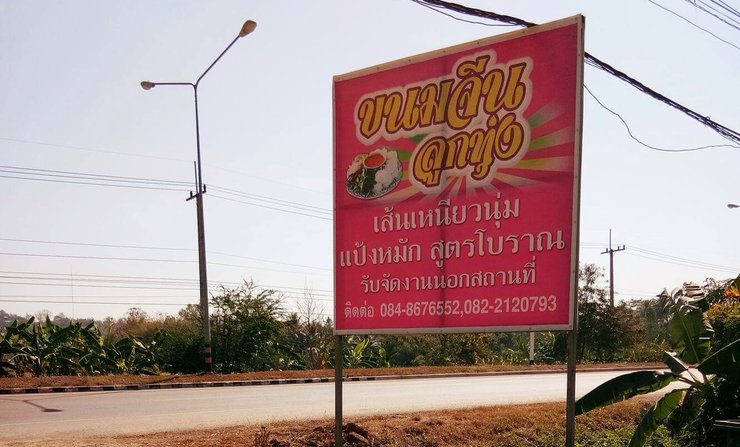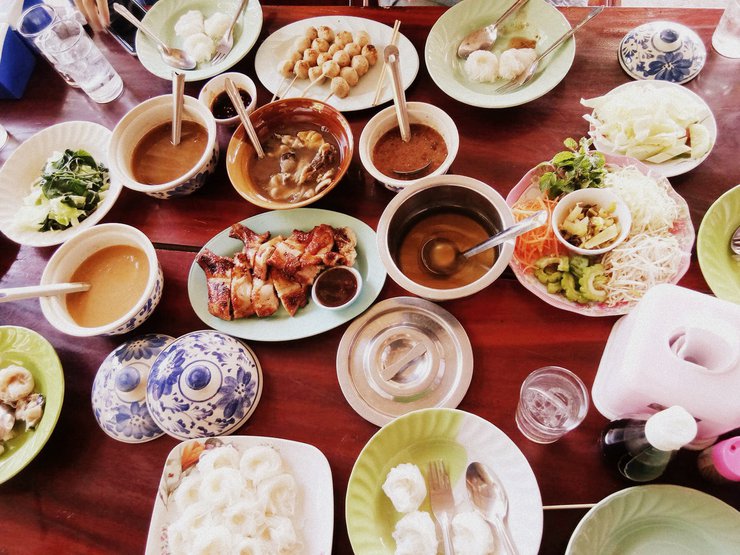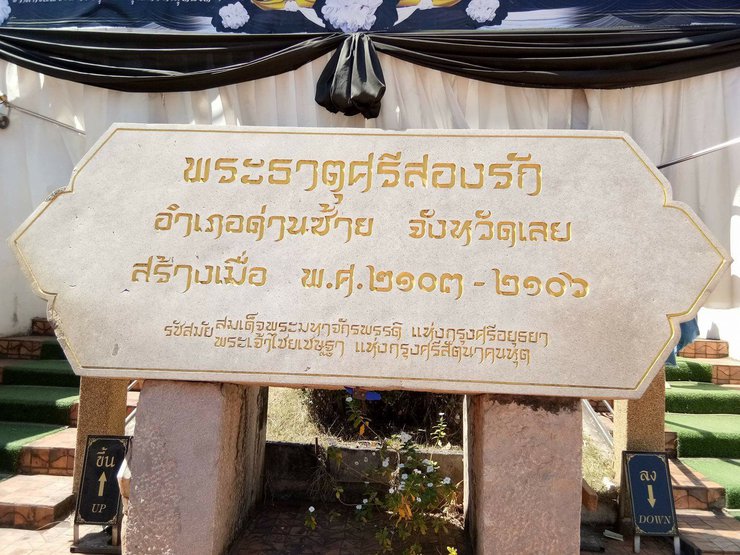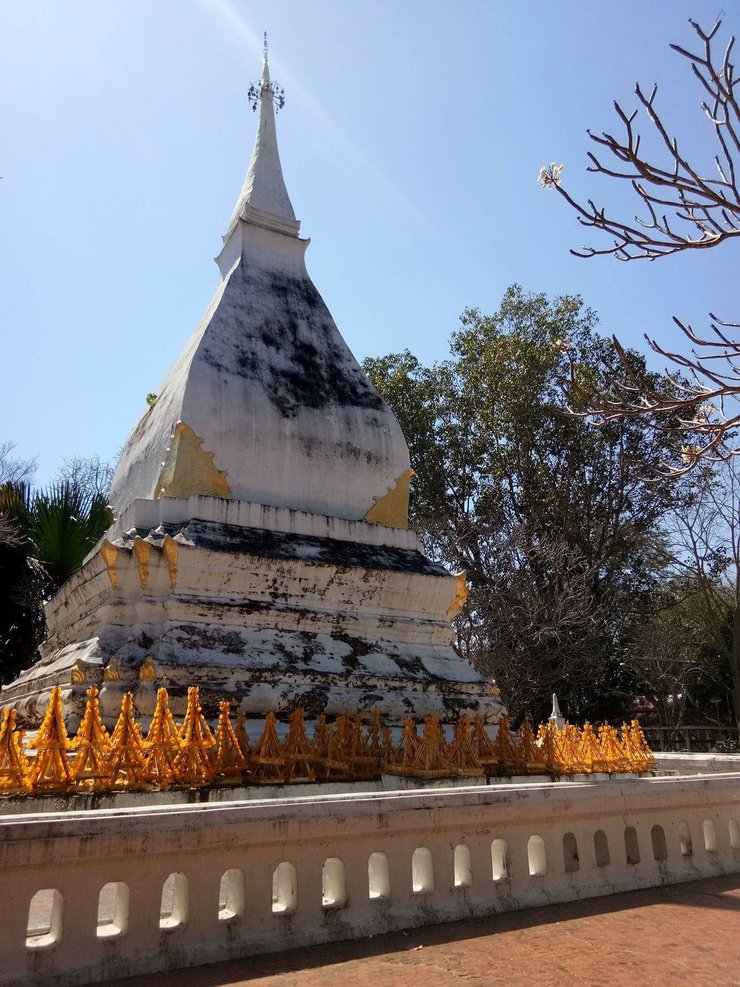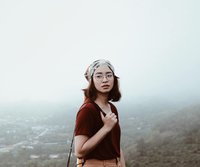Greetings! I am a novice reviewer, and I would like to introduce myself. 🙏🙏 I recently had the opportunity to experience community-based tourism, and I was so impressed that I wanted to share my experience with you.
First of all, I would like to thank my friends who participated in the lucky draw for the "Traveling with TAT 2017" activity of the "Love Your Smile" program. I would also like to thank the "Love Your Smile" program and TAT for organizing this wonderful activity.
Community-based tourism is a form of tourism that allows visitors to participate in activities that are in line with the local community's way of life. This type of tourism supports local residents by providing them with additional income and encouraging them to participate in the preservation of local resources.
👋👋 Farewell, Bangkok.
The Journey Begins: A Culinary Adventure in Phetchabun
The moment we boarded the vehicle, it felt like we were teleported. In the blink of an eye, we found ourselves in Phetchabun. Our first destination, "Khao Chin Look Toong" restaurant, awaited us at approximately 10:00 AM. This was earlier than anticipated, as we had initially estimated an arrival time of 11:00 AM. It's safe to say that we made excellent time.


The food here is truly amazing, especially the freshly made rice noodles that are perfectly chewy and springy. There are many different curry options to choose from, including coconut curry, jungle curry, chili paste, green curry, and catfish curry. Everything is delicious, but the most unique dish is the fermented fish curry with boiled herbs. It tastes similar to jungle curry, but it has a clear broth and a strong herbal aroma. It's absolutely delicious!
Another highly recommended menu item is the soft coconut milk rice noodle pancake.

At first glance, the appearance reminded me of "Khanom Chak", a traditional Thai dessert. However, upon taking a bite, I was pleasantly surprised by its deliciousness. The taste was smooth and the dough was soft and chewy, unlike the hard texture of "Khanom Chak". The aroma of coconut was also very strong. If you have the chance to pass by, you should definitely try it. It's truly amazing! After feeling satisfied, we continued our journey. Fortunately, due to our good time management, we had the opportunity to visit one more place before entering the first community. The place we went to was...
The history of "Phra That Si Song Rak," as recounted by the team, states that the stupa was constructed during a period of territorial conflict. Thailand and Laos, akin to siblings, formed an alliance and pledged not to engage in war. To solidify this pact, they erected the stupa, symbolizing their commitment. We believe this act was comparable to signing a treaty, but instead of using paper, they opted for the grandeur and permanence of a stupa.

At the foot of the stairs, there are several prohibitions displayed: no hats, no umbrellas, no shoes, no food, and most importantly, no red items of any kind. The Sri Song Rak Stupa was built to promote unity and harmony, and red is seen as a symbol of blood and violence. Therefore, red is strictly forbidden. Additionally, women are prohibited from entering certain areas, although the reason for this remains unclear.
At the front, there is a point for worshiping and making merit. After worshiping, you can walk in to pay homage to the stupa inside.


Upon entering the temple grounds, visitors are greeted by an intriguing sight: yellow pyramid-shaped structures known as "ต้นผึ้ง" (beehive trees) arranged around the main stupa. These structures are crafted from bamboo and adorned with yellow "ดอกผึ้ง" (beehive flowers) made from genuine beeswax. Devotees often offer these beehive trees as a form of worship or to fulfill vows made to the stupa. Local belief holds that those who make offerings and prayers at the stupa with beehive trees are more likely to have their wishes granted.

There are ancient stone inscriptions.

After paying respects and taking photos at the sacred Phra That, we continued our journey according to the program.
The community we will visit is "Kok Sathon Community". The first place we will visit in the community is "Ban Mak Khaeng Park". In the past, this area was known as a "red zone" due to constant battles with communist forces. With the great kindness of His Majesty King Bhumibol Adulyadej (Rama IX), who saw the suffering of the people, he and the Queen traveled to the area to provide encouragement and support to the soldiers and villagers. Moreover, His Majesty King Maha Vajiralongkorn (Rama X) also visited this place to join the fight with the soldiers. The park has recreated the area to resemble the past and exhibits artifacts and weapons used during that time.






The speaker's account of the King's history filled us with a profound sense of gratitude. Even in times of turmoil and danger, His Majesty never wavered in his commitment to the people. We are truly fortunate and proud to be born in Thailand, a nation guided by the institution of the monarchy. We believe that the local villagers and all Thai people share this sentiment.
Having learned about the history of the area, we then went to observe the lives of the people in the community. The main economic crop of this community is ginger, so our next activity for the day was related to ginger... The road we will be taking from here is a bit rough, so we have to switch from the comfortable van to...

This is the vehicle we use to travel. It is open-air, allowing for fresh air, sunshine, and, unfortunately, dust. 😁😁 It is recommended that those who plan to travel on this vehicle bring a cloth or mask, a hat, and sunglasses, as they will definitely be useful.

Ready to go! Let's go!
After a dusty journey, we arrived at the village. The villagers eagerly taught us how to dig ginger, demonstrating the process and explaining the planting steps in detail. We can now plant ginger at home! The ginger we dug up today will be processed into ginger powder tomorrow. (Stay tuned for episode 2.)

While digging, a rare item was discovered.

Focus on the ginger, not the guy in the back, please. 😏😏 This rare item is actually a mutated ginger, which is very rare to find in a field, and some fields don't have it at all. It tastes much spicier than regular ginger, but the rhizome is extremely small. The farmer said that if you find it, you should throw it away because it's unusable. But I feel a little sorry for it. I wonder if there's anything we can do with this rare item.
After finishing digging ginger, it's time to check in to our accommodation. Tonight, we'll be staying at "Pang Sukkhamol," which offers both rooms and camping areas. Moreover, there are also photogenic corners for capturing memories.

The resort provided teepees and props, eliminating the need for guests to bring their own. This thoughtful gesture was greatly appreciated.

The renowned Phi Ta Khon masks of Loei province.

The next room was a guest room, each with its own unique theme. This room belonged to a fellow traveler and was decorated in a traditional Thai style.

This is our room, Indian theme.

If you're curious about other types of accommodations, feel free to check them out. The owner is friendly, approachable, and provides excellent care.
After showering and getting dressed, it was time for dinner. Tonight's meal was simple home-cooked food, but I must say, everything was delicious.

Notably, the "stir-fried fiddlehead fern" dish arrived later but was finished first, with two additional orders placed.

The trip also featured a performance by members of the Hmong ethnic group. We conclude today's trip with a photo of the adorable Hmong children. See you again in "Exploring Loei...Relaxing Community Style" episode 2.

Thank you for the beautiful pictures, P'Pun and Pla.
Yuiyui Yookyik
Friday, October 4, 2024 3:18 PM




